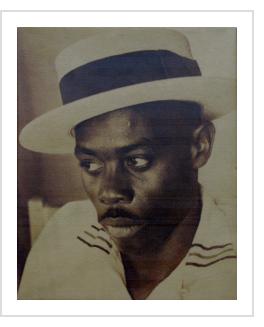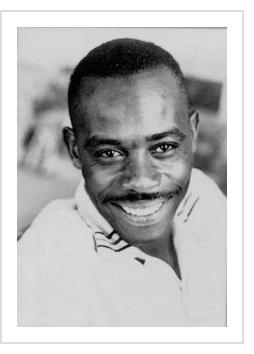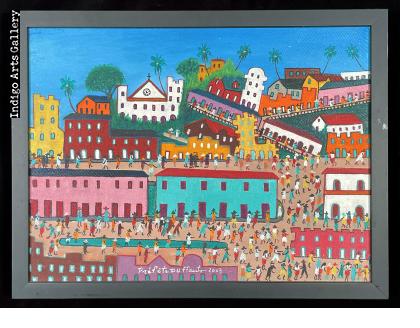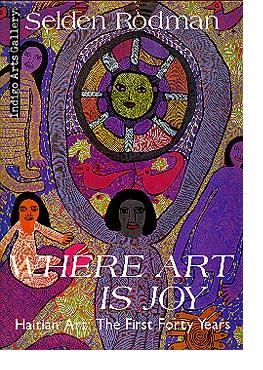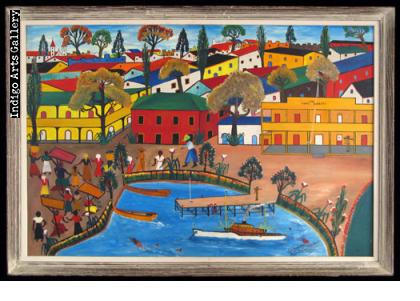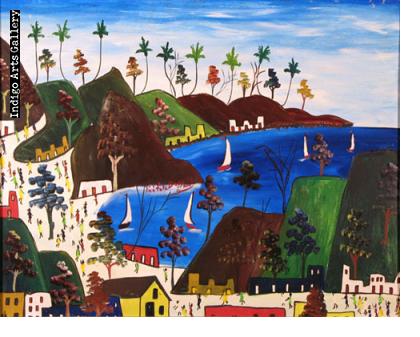About the Artist
Préfète Duffaut was born in 1923 in Jacmel, on the south coast of Haiti. He passed away on October 6th, 2012. Brought up by an unkind stepmother, Duffaut withdrew into himself and escaped to an ideal world on paper. His little sketches and paintings helped him to overcome periods of despair. By age twelve, he worked as a shipwright like his father. He had to cross the seemingly endless and imposing mountains to get to the coastal ciies to work. After his marriage, Duffaut resettled in Jacmel, where he decorated his small house with geometric designs of stars, flags,and vases filled with flowers. He was on a job hunt in Picmi on La Gonave when the Virgin appeared to him in a dream, telling him to decorate the church walls with her image. Duffaut did as he was told, to the joy of the villagers. After he returned to Jacmel, American friends of DeWitt Peters made his work known through photographs of his wall paintings. His association with the Centre d'Art then began. He rarely paints other subjects than the Virgin (for Duffaut a representation of Erzulie), pictures of geometric designs, and imaginative constructions of mountains dotted with little houses, with the sea in the distance. Even his two murals for Holy Trinity Cathedral - "The Temptation of Christ" and "The Processional Road" - include these scenes. However, each painting is packed with didactic meaning expressing his moral, philosophical, and religious ideas. From Haitian Art by Ute Stebich, 1978.
"Born in Jacmel in 1923, Préfète DUFFAUT arrived at the Centre d’Art in 1948. He was immediately noted for the strength and specificity of his talent. In 1950, he is among the artists chosen to paint the murals of the Holy Trinity Episcopal Cathedral of Port-au-Prince. Impetuous colorist, he never stopped giving priority to drawing. His inspiration, from the start, was fed by two primary sources endlessly repeated in infinite variations and meticulous work: the imaginary city and Virgin Mary-Erzulie. Two themes lived in their ambiguity. Two themes connected to both Catholicism and voodoo. This ambiguity explains why Duffaut is selected as one of the genuine representatives of international surrealist painting." Dr Michel Philippe Lerebours (cited by the Toussaint Louverture Cultural Foundation).

